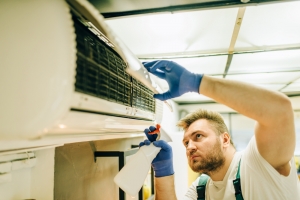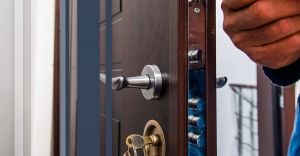Appliances are indispensable in modern homes, simplifying daily tasks and enhancing convenience. However, when these essential devices malfunction, it can disrupt your routine and cause frustration. Before calling a professional, attempting DIY troubleshooting can often identify and resolve common problems, saving time and money. If you are in the Vancouver area and prefer to leave it to the pros, you can always consider appliance repair to ensure the job is done right. This guide provides a step-by-step approach to troubleshooting appliance issues, empowering you to diagnose and fix minor problems safely and effectively.
Understanding Basic Appliance Components
Before diving into troubleshooting, it's crucial to understand the basic components of common appliances:
- Refrigerators: Compressor, condenser coils, evaporator coils, thermostat, and door seals.
- Washing Machines: Water inlet valve, drain pump, motor, drive belts, and control panel.
- Dryers: Heating element (gas or electric), drum, drive belt, blower fan, and thermostat.
- Dishwashers: Water inlet valve, drain pump, spray arms, heating element, and float switch.
- Ovens: Heating elements (bake and broil), thermostat, igniter (gas ovens), and control panel.
Safety First: Essential Precautions
Safety should always be the top priority when troubleshooting appliances:
- Disconnect Power: Always unplug the appliance from the power outlet before starting any inspection or repair.
- Wear Protective Gear: Use gloves to protect your hands and safety glasses to shield your eyes.
- Read the Manual: Consult the appliance's user manual for specific safety instructions and troubleshooting tips.
- Avoid Water: Never work on electrical components with wet hands or in damp environments.
- Know Your Limits: If you're uncomfortable or unsure about a repair, it's best to call a qualified technician.
Step-by-Step Troubleshooting Guide
Gather Information:
- Note the model number and age of the appliance.
- Describe the problem as accurately as possible.
- Check if the appliance is still under warranty.
- Visual Inspection:
- Check for obvious signs of damage, such as frayed wires, broken parts, or leaks.
- Look for obstructions or blockages in vents, hoses, or filters.
- Ensure the appliance is properly connected to power and water supplies.
- Basic Tests:
- Power Supply: Verify that the outlet is working by plugging in another device.
- Circuit Breaker: Check the circuit breaker or fuse box for tripped breakers or blown fuses.
- Thermostat Settings: Ensure temperature settings are correct and not set too low or high.
- Appliance-Specific Troubleshooting:
- Refrigerator Not Cooling:
- Problem: The refrigerator is running but not cooling properly.
- Possible Causes:
- Dirty condenser coils: Clean the coils with a coil brush.
- Faulty door seal: Check for gaps and replace if necessary.
- Blocked vents: Ensure vents inside the refrigerator are not blocked by food items.
- Defrost system malfunction: Check for ice buildup and defrost manually if needed.
- DIY Fix:
- Clean condenser coils and replace the door seal.
- Adjust temperature settings and reorganize food to ensure proper airflow.
- Washing Machine Not Draining:
- Problem: The washing machine is not draining water after a cycle.
- Possible Causes:
Clogged drain hose: Disconnect and clean the hose.
- Faulty drain pump: Check for obstructions and test the pump with a multimeter.
- Blocked drain filter: Locate and clean the filter.
- Kinked or damaged drain hose: Replace the hose if necessary.
- DIY Fix:
- Clean the drain hose and filter.
- Ensure the drain pump is functioning correctly.
- Dryer Not Heating:
- Problem: The dryer is running, but clothes are not drying.
- Possible Causes:
- Faulty heating element (electric dryers): Test the heating element with a multimeter.
- Gas supply issues (gas dryers): Check gas lines and igniter.
- Clogged lint trap: Clean the lint trap before each use.
- Blocked vent: Ensure the vent is free from obstructions.
- DIY Fix:
- Replace the heating element or clean the lint trap and vent.
- Ensure the gas supply is functioning correctly.
- Dishwasher Not Cleaning:
- Problem: Dishes are not getting clean after a cycle.
- Possible Causes:
- Low water pressure: Check water inlet valve and supply.
- Clogged spray arms: Clean the spray arms to remove food particles.
- Faulty detergent dispenser: Ensure the dispenser is working correctly.
- Low water temperature: Test the water heater and adjust if necessary.
- DIY Fix:
- Clean spray arms and detergent dispenser.
- Adjust water temperature and check water pressure.
- Oven Not Heating:
Problem: The oven is not heating to the set temperature.
- Possible Causes:
- Faulty heating element: Test the bake and broil elements with a multimeter.
- Faulty thermostat: Replace the thermostat if it's not functioning correctly.
- Igniter issues (gas ovens): Check the igniter for proper operation.
- Calibration issues: Calibrate the oven according to the manufacturer's instructions.
- DIY Fix:
- Replace faulty heating elements or calibrate the oven.
- Ensure the igniter is working correctly.
- Using a Multimeter:
A multimeter is a versatile tool for testing electrical components:
- Voltage Testing:
- Set the multimeter to voltage (V) mode.
- Test outlets and power cords to ensure they receive the correct voltage.
- Continuity Testing:
- Set the multimeter to continuity mode.
- Test heating elements, fuses, and switches to check for breaks in the circuit.
- Resistance Testing:
- Set the multimeter to resistance (Ω) mode.
- Test heating elements and motors to measure resistance and identify faults.
- If your washing machine is having problems, consider professional washer repair to ensure everything is running smoothly. Also, don't wait too long if you notice issues with your fridge; timely refrigerator repair can prevent food spoilage and further damage.
- Advanced Troubleshooting:
- Control Board Issues:
- Symptoms: Erratic behavior, error codes, or complete failure.
- Troubleshooting: Check for loose connections, burned components, or corrosion. If necessary, replace the control board.
- Motor Problems:
Symptoms: Grinding noises, failure to start, or overheating.
- Troubleshooting: Inspect the motor for damage, test the motor windings with a multimeter, and lubricate moving parts.
- Sensor Malfunctions:
- Symptoms: Incorrect temperature readings, failure to detect water levels, or error codes.
- Troubleshooting: Test sensors with a multimeter to check for proper resistance or voltage output.
Common Error Codes and Their Meanings
Modern appliances often display error codes to indicate specific problems. Here are a few common error codes and their general meanings:
- Error Code F1 (Oven): Indicates a problem with the oven's temperature sensor.
- Error Code E1 (Washing Machine): Indicates a problem with the water inlet valve.
- Error Code dE (Dishwasher): Indicates a door error, meaning the door is not properly closed.
- Error Code LF (Washing Machine): Indicates a low-flow condition, meaning the water supply is insufficient.
- Error Code F0/E0 (Refrigerator): Indicates a communication error between the control board and display.
Maintaining Appliances to Prevent Issues
Preventive maintenance is key to extending the life of your appliances and avoiding common problems:
- Regular Cleaning:
- Clean refrigerator coils every six months.
- Clean the lint trap of the dryer after each use.
- Clean the dishwasher filter monthly.
- Wipe down appliance surfaces regularly to prevent the buildup of grease and grime.
- Inspect and Replace Worn Parts:
- Check refrigerator door seals for cracks and replace as needed.
- Inspect washing machine hoses for leaks and replace them every five years.
- Replace dryer vents with rigid metal ducts to prevent lint buildup and fire hazards.
- Proper Usage:
Avoid overloading washing machines and dryers.
- Use the correct amount of detergent in dishwashers and washing machines.
- Avoid slamming refrigerator and oven doors to prevent damage to seals and hinges.
When to Call a Professional
While DIY troubleshooting can resolve many appliance issues, certain problems require professional expertise:
- Complex Electrical Issues: If you're uncomfortable working with electrical components, it's best to call a qualified electrician or appliance repair technician.
- Gas Appliance Repairs: A licensed technician should always perform gas appliance repairs due to the risk of gas leaks and explosions.
- Refrigerant Leaks: Refrigerant leaks in refrigerators and air conditioners require specialized equipment and knowledge to repair safely and effectively.
- Major Mechanical Failures: Problems with motors, compressors, or transmissions often require specialized tools and training to diagnose and repair correctly.
Essential Tools for Troubleshooting
Having the right tools on hand can make troubleshooting appliance issues easier and more efficient:
- Multimeter: For testing voltage, continuity, and resistance.
- Screwdriver Set: Including various sizes of Phillips head and flathead screwdrivers.
- Pliers: For gripping and manipulating small parts.
- Adjustable Wrench: For tightening and loosening nuts and bolts.
- Socket Set: For removing and installing fasteners.
- Coil Brush: For cleaning refrigerator coils.
- Lint Brush: For cleaning dryer vents.
- Safety Glasses: To protect your eyes from debris.
- Gloves: To protect your hands from injury.
By following this comprehensive guide, beginners can confidently troubleshoot common appliance issues, saving time and money while ensuring their appliances function efficiently. Remember to prioritize safety and know when to seek professional assistance to avoid further damage or injury. Regular maintenance and timely repairs will extend the life of your appliances, keeping your home running smoothly.






